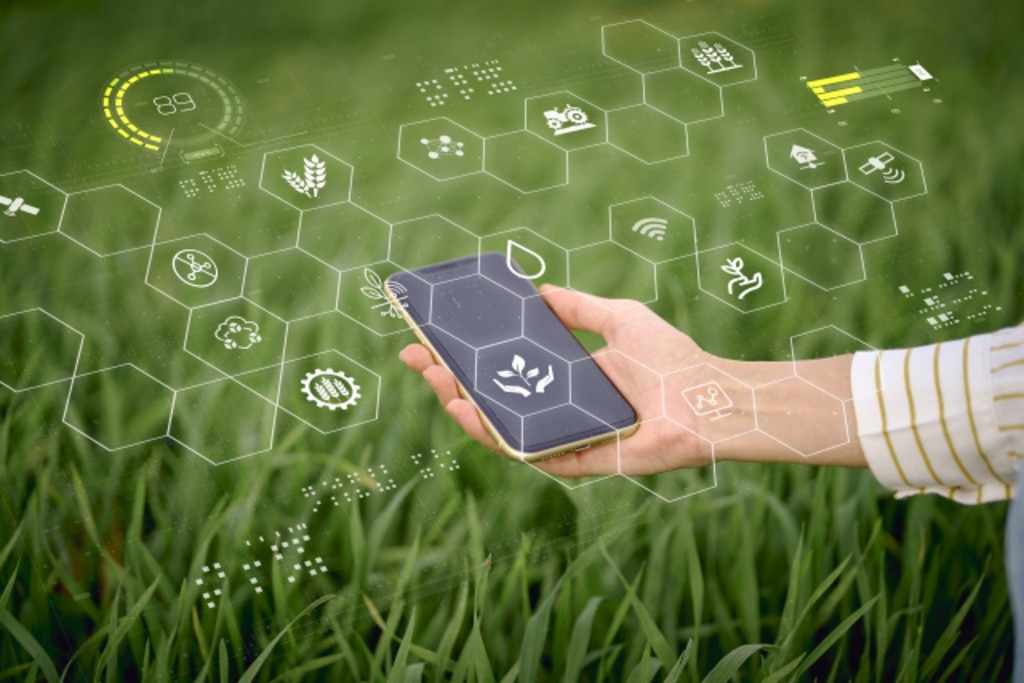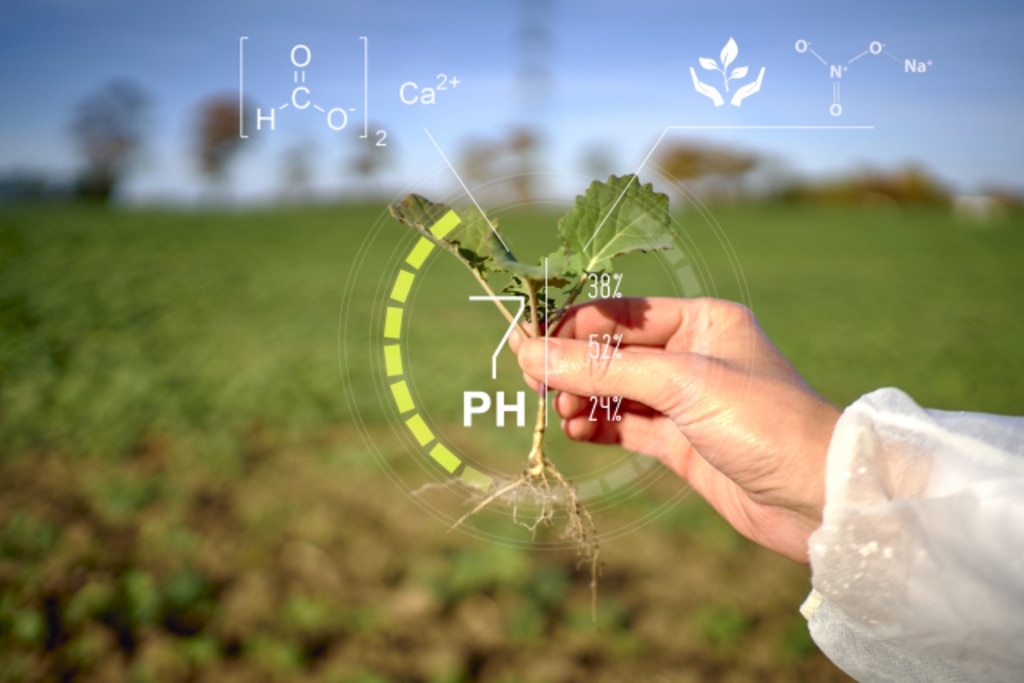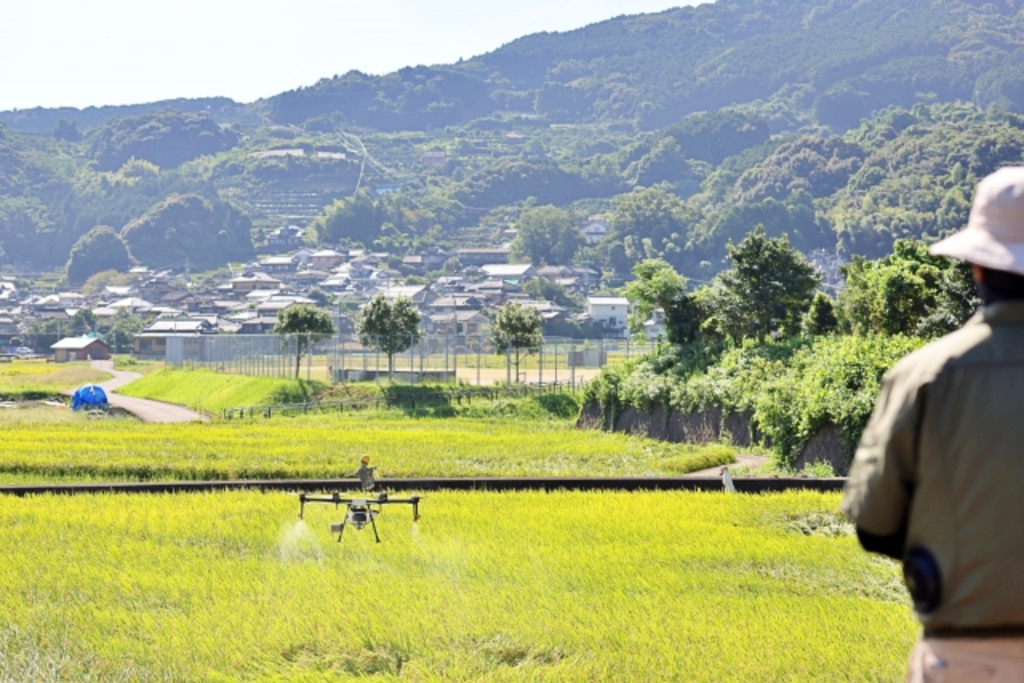What is Smart Farming?
Smart agriculture is a new form of agriculture that aims to improve agricultural productivity and efficiency by utilizing cutting-edge technologies such as robotics, ICT, AI and IoT. It aims to resolve labor shortages and produce high-quality agricultural products through projects such as the "Smart Agriculture Demonstration Project" promoted by the Ministry of Agriculture, Forestry and Fisheries.

Definition and History of Smart Farming
Smart farming, sometimes called as "smart agriculture", "precision farming", "E-agriculture" or "digital agriculture", is an agricultural practice that uses information and data technology to optimize agricultural production systems and operations. The term "smart agriculture" began to be used in Japan around 2012, and since 2019, "Smart Farming Demonstration Projects" have been adopted in various regions leading to widespread recognition. It origins date back to the introduction of GPS to tractors in the 1990's and it has developed from efforts that began as precision agriculture.
Smart Farming is positioned as one of the medium-term measures the government should take in the 2020 "Basic Plan for Food, Agriculture, and Rural Areas," and is an important strategy for recovering the delay on adoption of ICT in agriculture. It covers all farm work and utilizes real-time data on soil and crop conditions, weather, resources, and more, enabling decision-making based on data rather than intuition.

Examples of Cutting-edge Technologies
There is a wide range of smart farming technologies, and various solutions are being developed to make each agricultural process more efficient and advanced.
The "Smart Agriculture Technology Catalog" published by the Ministry of Agriculture, Forestry and Fisheries systematically organizes these technologies and promotes their adoption in agricultural fields.
Please refer to the following for typical technologies and categories:
Cultivation Management and Monitoring Technologies
- Environmental Monitoring System: A system that measures temperature, humidity, solar radiation, CO2 concentration etc., and manages and analyzes the data on the cloud.
- Paddy Field Sensor, Water Management System: A system that uses sensors to measure the water level and temperature in paddy fields and remotely control the floodgates.
- Cultivation Data Utilization System: An AI system that analyzes collected environmental data and work records to suggest optimal cultivation methods.
Automation and Labor-saving Technologies
- Self-driving Tractor: An automatic steering system using GPS enables straight-line driving and operation with the same precision as an experienced tractor.
- Autonomous, Following Transport Robot: A robot that automatically transports harvested produce and materials, reducing the burden on workers.
- Self-propelled Grass Trimmer: A machine that efficiently removes weeds using remote control and autonomous driving.
- Drones: Unmanned aerial vehicles used for spraying pesticides, observing crop growth, surveying fields, etc.

Harvesting and Sorting Techniques
- Mechanical Cabbage Harvester: A machine that automates the cabbage harvesting process and alleviates the labor shortage.
- AI Sorting System: A system that uses cameras and AI to automatically determine and sort the quality and size of agricultural produce.
- Automatic Sorting and Packaging Robot: Robot technology that automatically sorts and packages harvested produce such as strawberries.
Technology for Greenhouse Horticulture
- Environmental Control System: An automatic control system that keeps the temperature, humidity, CO2 concentration, etc. inside the greenhouse at an optimum level.
- AI Harvesting Robot: A robot that recognizes fruits hidden among leaves and stems and harvests them efficiently using the optimal route.
- Remote Monitoring System: A system that allows you to check the environment and crop conditions within the facility from a smartphone or tablet.
Although each of these technologies is effective on its own, combining multiple technologies creates synergistic effects. For example, linking sensing data to autonomous agricultural machinery makes it possible to dynamically adjust fertilization according to the condition of the field. In addition, "remote monitoring" using the cloud makes it possible to check the status of the farm and operate equipment from a distance, resulting in more efficient work and more advanced management.
Sensor Technologies and Precision Agriculture
Sensor technology, which is at the core of smart agriculture, is enabling a shift from the traditional agriculture that relies on "intuition and experience" to precision agricultural management based on data. By installing sensors that measure temperature, humidity, soil moisture, solar radiation, and other factors, it is now possible to grasp the crop cultivation environment in real time. Data obtained from these sensors is sent to the cloud, allowing farmers to check it anytime, anywhere.
Precision farming is a series of agricultural management techniques that closely monitor and finely control the condition of farmland and crops, and use the results to plan for the next year. The following technologies have been developed as tools to support precision farming:
- Observation tools: Systems that can grasp the growth status of agricultural crops, such as field servers and satellite remote sensing.
- Control tool: Variable work machine that can automatically adjust the amount of fertilizer, etc. input for each location.
- Harvesting tool: Yield combine that can automatically measure rice yield and moisture content of rice grains.
- Analysis tool: Information analysis tool that visualizes yields, etc. on maps and can be used for agricultural planning.
One example of the use of agricultural IoT is a system that uses sensors to monitor soil and weather conditions and optimizes irrigation and fertilization based on the collected data. This makes it possible to provide each crop with the optimal environment for moisture, nutrients, light, etc., and big data analysis makes it possible to select varieties and develop cultivation plans suited to weather and soil conditions.
High-precision INS (Inertial Navigation System) sensors for precision agriculture not only increase productivity but also minimize environmental impact , delivering the right amount of chemicals where they are needed, or replacing mechanical alternatives, leading to more sustainable farming.
One example of combining AI and sensor technology is Plantect, a service that predicts the risk of disease in agricultural crops. AI analyzes data obtained from temperature and humidity sensors, CO2 sensors, solar radiation sensors , etc. to predict the risk of disease and propose countermeasures.
The introduction of these sensor technologies and precision agriculture has brought about a variety of benefits, including labor-saving and labour-reducing farm work, cost reduction, improved productivity, improved quality, and environmental conservation. It has now become possible to create an environment that is favorable for crop growth , such as by using soil sensors to check moisture and nutrient levels and linking with automatic irrigation systems to provide optimal watering.
Reference information:
Successful References and Benefits
The specific benefits of implementing smart agriculture in demonstration projects vary depending on the scale of management and regional characteristics, but in many cases, benefits such as reduced labor hours and increased yields have been confirmed. Below are some representative examples of practical applications and their benefits:
- Reduction in labor hours: In a survey of the smart agriculture demonstration project, labor hours in rice cultivation were reduced by an average of 9%. In particular, a labor hour reduction of 10% or more was confirmed in about 30% of the demonstration areas.
- Collaborative work of robot tractors: Collaborative work between manned and unmanned vehicles reduces work time by approximately 30%, making it possible to increase the work area by 25%.
- Introduction of automatic steering tractors and straight-line keeping rice transplanters: One farm has successfully reduced work time by 27% by introducing these.
- Yield increase effect: Variable fertilization based on sensing data and improvements to variety composition and fertilization design have increased rice yields by an average of 9%. In particular, in areas where fertilization was improved, yields increased by 13%.
- Expanding business scale and improving profitability: There are cases where the introduction of smart technology, combined with improved cultivation practices and field consolidation, has enabled farms to expand scale and increase income without a significant increase in labor force.
- Cost reduction through machinery sharing: In mountainous areas, efforts to share smart agricultural machinery among multiple farmers have been proving effective in increasing machinery operating rates and reducing installation costs.
- Improving profits through data utilization: Cases have been reported in which rice yields and incomes have increased through the use of field-specific yield data, and in which incomes have been increased through data sharing within a horticultural production division.
- Improving productivity in mountainous areas: There are cases where productivity has been successfully improved even in disadvantaged areas through the consolidation of small plots of land and drainage measures.
- Long-term profitability improvement: A follow-up study of the smart agriculture demonstration project confirmed that profitability has improved overall, even after the project ended, when looking at the trends in income and expenditures.
- Effect of introducing a solution to business problems: In particular, in cases where business problems (bottlenecks) are clearly identified and smart technology has been used to solve these problems, the increase in profits has exceeded the implementation costs.
As these examples show, smart agriculture technology not only saves labor, but also contributes to improving the profitability of agricultural management through data-based cultivation improvements and optimization of management decisions. However, in order to maximize the effect of its introduction, it is important to clarify management issues and select the appropriate technology for them.
Japan's Smart Agriculture Policy
In the "Basic Plan for Food, Agriculture and Rural Areas," the Japanese government has positioned smart agriculture as an important measure for turning agriculture into a growth industry. The basic plan, approved by the Cabinet in March 2020, set a goal of raising calorie-based food self-sufficiency to 45% by 2030, and clearly indicated the acceleration of smart agriculture as a means to achieve this. Furthermore, in October 2020, the "Comprehensive Package for Promoting Smart Agriculture" was formulated, outlining five pillars for comprehensive promotion from research and development to demonstration and on-site implementation (demonstration, analysis, and dissemination, development of new agricultural support services, establishment of a practical environment, provision of learning opportunities, and overseas expansion).
Moves toward revising the Basic Act on Food, Agriculture, and Rural Areas are accelerating in 2023, with a decision being made to develop a timetable for submitting a proposed amendment to the 2024 ordinary Diet session, including legislation to promote smart agriculture. The government has been operating an agricultural data sharing platform called "WAGRI" since April 2019, which promotes the creation of new services by allowing approximately 50 businesses, including farmers, manufacturers, and ICT vendors, to share and utilize data. In addition, as part of the "Agricultural DX Initiative," a transformation to data-driven agricultural management (FaaS: Farming as a Service) using digital technology is being promoted, and policies are being implemented to ensure the sustainable development of agriculture and food security.
Problems and Issues
The main challenges preventing the spread of smart agriculture are the high implementation and maintenance costs and high technical hurdles. Introducing self-driving tractors and environmental control systems requires an initial investment of hundreds of millions to tens of millions of yen, and the risk of not being able to recoup the investment is a major barrier, especially for small-scale and elderly farmers. In addition, because it requires technical knowledge sucha as data analysis and operation of IoT devices, many farmers, especially elderly people, have difficulty learning new technologies.
Solutions to these issues include:
1) utilizing national and local government subsidy systems (smart agricultural technology development and demonstration projects, IT introduction subsidies, etc.),
2) spreading costs by multiple farms purchasing equipment jointly or using leasing and sharing services, and
3) promoting information exchange and training participation by building networks among farmers. Furthermore, systemic reforms, such as the development of systems across the industry and the improvement of support systems for new farmers , are also important issues.
Sensing Technologies of Matsushima Measure Tech
Please feel free to ask us if you have any questions
or you want our support. ⇩⇩⇩
© Matsushima Measure Tech Co., Ltd.



